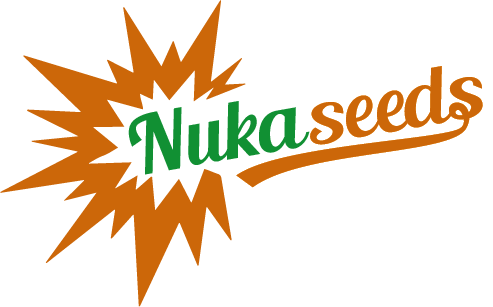English
Why does marijuana have to be burned?
First, a brief explanation of why cannabis is burnt and smoked in the first place. It is not a good idea to eat a gram of cured flower straight from the bag. It tastes like eating Kentucky Bluegrass and you won’t get the desired effect. The THC in the marijuana has to go through a process known as decarboxylation to become psychoactive. Ed Rosenthal, one of the world’s leading experts on cannabis biology, explains the rest in this excerpt from one of his columns:
Marijuana produces THCA, an acid with an attached carboxyl group (COOH). In its acidic form, THC is not very active. Only when the carboxyl group is removed does THC become psychoactive. When marijuana is smoked, the THC is vaporised behind the hot spot as the hot air from the burn is drawn through the joint or pipe bowl to the unburnt material.
How much THC from a marijuana joint enters the bloodstream?
One of the first NIDA (National Institute on Drug Abuse) studies on cannabis cigarettes, conducted in 1982 by NIDA researcher Richard L. Hawks, estimated that 20 per cent of the THC in a cannabis cigarette was released into the body if the smoker took a 5-second drag every minute. All the rest was lost through pyrolysis (combustion) and sidestream smoke (the rising stuff from the smouldering end).
A later study in 1990 by Mario Perez-Reyes, a psychiatry researcher at the University of North Carolina, quantified more precisely the path the THC takes. He estimated that 20 to 37 percent of the THC in a joint reaches the user in mainstream smoke. Twenty-three to thirty percent is lost through pyrolytic destruction, and 40 to 50 percent enters the sidestream smoke.
In these early studies, scientific interest was focused exclusively on THC. Other cannabinoids, such as cannabidiol (CBD), and terpenes were not yet known. Also worth noting: all of these American studies were conducted with low-quality, low-potency (1.5 to 3 percent THC) cannabis supplied by NIDA. These estimates allow us to come up with some interesting numbers. If an average joint contains about 700 milligrams of cannabis flower – that’s the configuration of a “scientific test joint” – and the average THC content today is about 20 percent, that means there is 140 mg of THC available in each joint. If 20 to 37 percent of this enters the lungs, this corresponds to a THC dose of 28 to 52 mg. Before comparing this to the THC milligrams in edibles, however, it should be remembered that the body metabolises edibles differently and reacts differently to them than to smoking.
More short puffs or fewer long puffs?
A 2008 study conducted by researchers at Leiden University in the Netherlands, using much better cannabis (17.4 per cent THC), looked specifically at the issue of smoking pot. Using marijuana joints containing 700 mg of flower, the subjects tried all kinds of puffs. They took a two-second puff every 15 seconds, then every 30 seconds, then every 60 seconds. They tried a two-second pull, a three-second pull and a four-second pull. Then the researchers drew blood from the subjects and measured their plasma THC levels. As expected, the THC content in the blood increased gradually in almost all cases. In other words, a longer puff brought more THC into the blood. A larger amount of inhaled smoke did the same. The short, two-second puff every 30 seconds and every 60 seconds yielded about the same amount of THC, about 22 nanograms per millilitre. But the same puff every 15 seconds doubled the THC intake to 44 ng/ml.
The conclusion: The average total marijuana joint temperature remained higher when a puff was taken every 15 seconds. This kept the entire THC decarboxylation and delivery system on its toes. If the joint was left to rest for 30 or 60 seconds, it cooled down. That’s the difference between keeping a machine running and turning it off and starting it up again.
Delivery Efficiency: Marijuana joint vs. vape and bong
In 2007, Donald Abrams, a pioneer in AIDS and medical cannabis research at the University of California at San Francisco, published a study on THC intake with the Volcano vaporiser. Abrams tested the vaporiser as a safer alternative to cannabis cigarettes. He was responding to a 1999 Institute of Medicine report that noted the medicinal value of cannabis but argued against recommending medical marijuana because of the health risks associated with smoking. Abrams found vaporising to be healthier. Compared to a smoked joint, the Volcano produced far less tar, carbon monoxide and other combustion byproducts, while delivering almost identical blood THC levels. The vaporizer absorbed 54 percent of the THC in the marijuana, compared to the 20 to 37 percent delivered by a marijuana joint.
In comparison, bongs may deliver less THC per gram of marijuana flower. Perez-Reyes found that the peak THC levels in the blood of his subjects smoking a water pipe were about 50 percent lower than the peak THC levels of the same subjects smoking the same amount of marijuana in a joint. This result might prove right those who wonder whether water pipe water filters out some of the cannabinoids desired by cannabis users.
Self-Titration Is a Real Thing
For Donald Abrams of UCSF, the most surprising data from his 2007 study may have been in the area of titration – a factor that affects THC concentration in the blood (more on that later). He asked his subjects to consume three different potencies: 1.7 percent THC, 3.4 percent and 6.8 percent. Under ideal conditions, the THC content in the blood of the test subjects should have increased with the increasing potencies. But surprise! They did not.
When smoking the 1.7 per cent THC cannabis, his test subjects reached a THC level of 80 ng/ml in the blood. At double the potency of the leaf (3.4 percent THC), they reached 110 ng/ml. And at four times the potency (6.8 percent), they reached a peak value of 120 ng/ml. Although the Volcano absorbed a higher percentage of THC compared to a joint, the THC levels in the blood plasma of the subjects using these devices were comparable.
And now comes the really interesting part: the subjects in Abrams’ study did not know the THC content when they consumed. This suggests that the study participants were doing some kind of self-titration, whether they were aware of it or not. Titration is a fancy word for dosage. Self-titration means that smokers adjust their smoking behaviour to get the desired amount of THC from the particular delivery system, taking more puffs at lower THC strengths and/or inhaling more efficiently than at higher ones.
“The phenomenon of self-titration of psychoactive drug intake from an inhaled delivery system is well documented for nicotine from cigarette smoking,” Abrams wrote, “but to our knowledge has not been previously reported for marijuana.”
Abrams’ study also has interesting policy implications. One of the arguments put forward against legalising recreational use is the fear that today’s higher-THC cannabis “is not the marijuana you knew in the 1970s”. This is true. But it may also be that users are simply inhaling less smoke or vapour than in the 1970s to achieve similar results.
Related articles :
Published by Sakul
24/02/2023choose and buy cannabis seeds from our offer
our pleasure





























